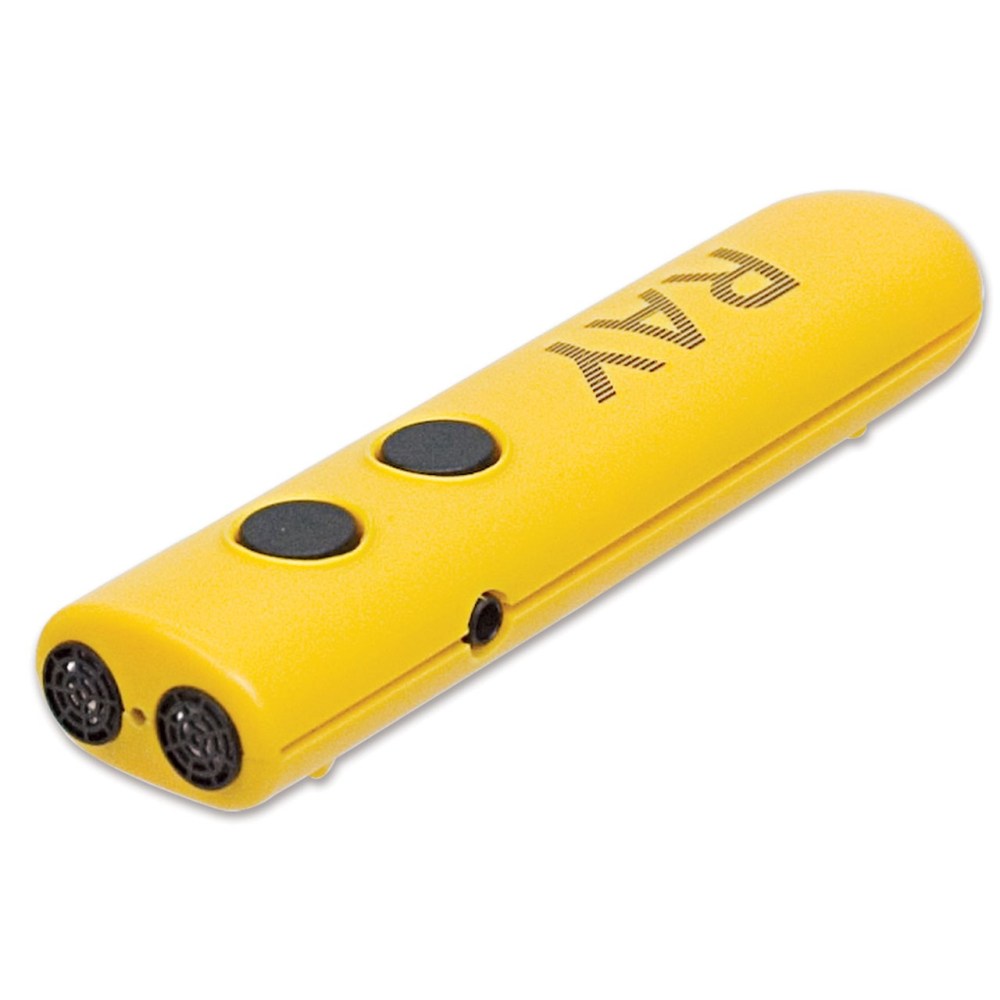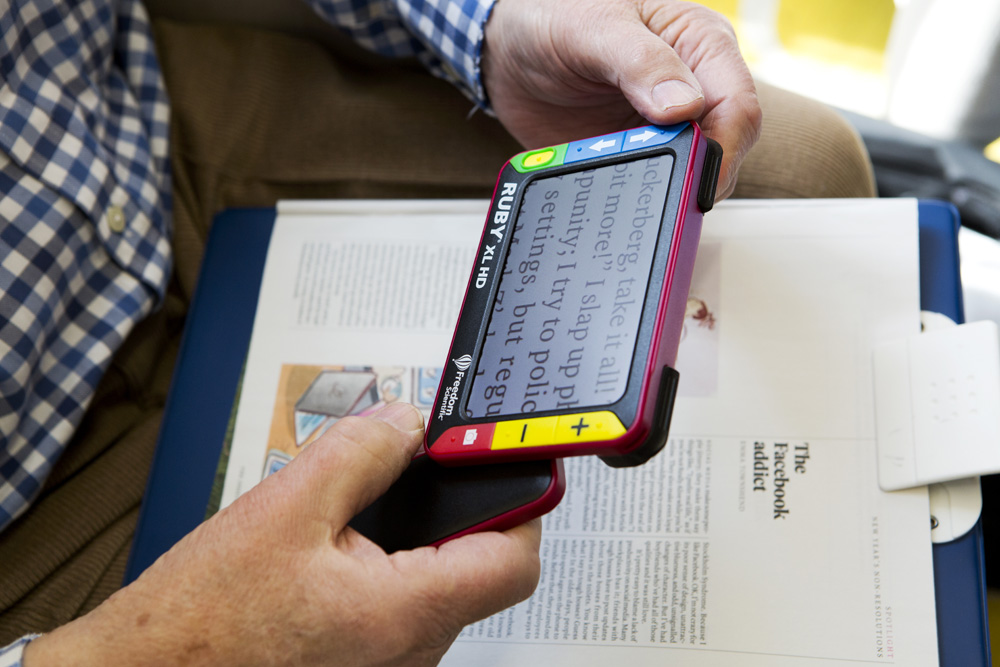Discover Ingenious Tools Created for the Visually Damaged
The growth of cutting-edge tools for the aesthetically damaged represents a significant improvement in access and self-reliance. Technologies such as smart glasses with AI abilities and mobile applications developed to provide auditory descriptions are improving daily experiences for users. In addition, wearable devices that utilize haptic comments improve environmental recognition, while modern Braille technologies offer new ways to engage with text. As these devices proceed to advance, their influence on the lives of those with visual impairments elevates essential questions regarding the future of inclusivity and autonomy in various facets of life. What lies ahead in this technical landscape?
Smart Glasses for Navigating

Smart glasses created for navigating are reinventing the method visually damaged individuals connect with their setting. These advanced tools use a combination of camera modern technology, man-made intelligence, and acoustic feedback to give real-time info about environments. By utilizing barrier detection systems, clever glasses can alert users to prospective dangers, enabling much safer flexibility in both unfamiliar and acquainted setups.
The integration of GPS innovation better boosts navigation capacities, permitting individuals to obtain auditory directions as they move. This hands-free technique not just fosters self-reliance yet additionally empowers visually damaged individuals to browse metropolitan landscapes with increased confidence. Additionally, lots of clever glasses are geared up with features that determine spots and road signs, supplying contextual details that boosts the customer experience.
Furthermore, the development of these gadgets is consistently progressing, with firms functioning to boost the precision of object recognition and expand the variety of navigational features. As clever glasses become a lot more easily accessible and affordable, they hold the possible to dramatically transform every day life for visually damaged customers. Ultimately, these ingenious devices represent a vital action toward inclusivity, offering improved movement and a greater feeling of freedom for individuals navigating the globe around them.

Mobile Application for Daily Living
How can mobile applications enhance the day-to-days live of aesthetically damaged people? Mobile apps are transforming the method aesthetically damaged users browse their settings, take care of everyday jobs, and accessibility details. These applications supply important assistance through different capabilities, promoting independence and improving top quality of life.
A number of ingenious mobile applications are created particularly for everyday living. Apps like Be My Eyes link aesthetically damaged users with sighted volunteers via video clip phone calls, enabling them to get real-time support with jobs such as reviewing tags or navigating unfamiliar spaces. Seeing AI, created by Microsoft, makes use of man-made intelligence to describe environments, reviewed text, and identify things, successfully transforming a smartphone into an effective device for everyday aid.
Furthermore, navigating apps customized for the aesthetically damaged, such as Aira and BlindSquare, supply audio-based directions and environmental details, allowing users to traverse their surroundings safely and with confidence. Past navigating and immediate aid, mobile apps also sustain organization and job administration, with features that assist users establish reminders, develop order of business, and track appointments. In recap, mobile applications serve as important resources, equipping visually impaired people to lead more independent and meeting lives.
Wearable Technologies for Help
Empowerment through modern technology is significantly apparent in the realm of wearable devices made to aid visually damaged people. These innovative devices integrate perfectly into life, improving navigating and supplying crucial responses to users. Smart glasses outfitted with electronic cameras can recognize faces and check out message out loud, allowing individuals to connect even more with confidence in social and professional settings.
An additional noteworthy innovation is the usage of haptic feedback systems in wearable tools. These systems make use of resonances or other tactile signals to communicate details about the user's environment, such as challenges or changes in surface, boosting mobility and security. Wearable innovations likewise include wristbands that attach to smart devices, signaling customers to notices with refined vibrations, thus boosting connection without reliance on visual cues.
As these modern technologies continue to develop, they are not only boosting freedom for visually impaired people however also fostering a higher sense of inclusion in society. By linking the space between difficulties faced in day-to-day living and the capacity for freedom, wearable modern technologies offer as critical devices in the pursuit for equality and empowerment for those with aesthetic impairments.
Sound Description Devices
Sound description devices play an essential function in enhancing availability for aesthetically damaged individuals, offering them with the capability to engage with aesthetic media. AI-powered visual aids. These devices offer narrated summaries of vital aesthetic elements in movies, television programs, and live efficiencies, guaranteeing that users can fully comprehend the context and emotions communicated through visuals
Audio summary can be incorporated right into different systems, consisting of streaming services, cinema testings, and live cinema. Numerous preferred streaming services currently include audio description as an accessibility feature, enabling audiences to select it quickly. In enhancement to traditional media, specialized applications also exist, giving find here audio summaries for art exhibitions, museums, and other cultural events.
The performance of audio description depends upon the skill of the narrators, who must communicate aesthetic details succinctly without diminishing the original audio. Innovations in this area are also leading the way for even more personalized experiences, where individuals can adjust the level of detail and pacing according to their preferences.
Braille Innovations and Devices
Braille developments and tools have actually substantially changed the means aesthetically impaired individuals communicate with message and info. Modern improvements have led to the growth of functional devices that boost literacy and freedom amongst customers.
In addition, portable Braille find out this here notetakers integrate conventional Braille input with contemporary performances, assisting in note-taking, organizing, and paper modifying on the go. Braille displays and notetakers. These small tools usually include text-to-speech abilities, bridging the void in between Braille and auditory details
In addition, innovative Braille printers have actually arised, allowing customers to generate Braille labels, files, and instructional materials efficiently. This ease of access cultivates higher participation in specialist and academic atmospheres, inevitably promoting inclusivity.
Furthermore, research study right into smart Braille modern technologies proceeds to broaden. Devices that integrate expert system are being checked out to provide real-time navigating support and contextual info, enhancing the individual experience in diverse settings. On the whole, these technologies show a dedication to empowering aesthetically damaged individuals via innovation, guaranteeing they can conveniently access and involve with the globe around them.

Final Thought
The development of innovative devices for the visually damaged significantly boosts self-reliance and top quality of life. Smart glasses, mobile applications, wearable innovations, audio summary tools, and Braille advancements jointly equip individuals by giving vital navigating help, ecological understanding, and improved analysis experiences. These innovations not only foster better addition but additionally promote freedom in day-to-day activities, inevitably adding to a more obtainable and equitable society for aesthetically impaired people. Continued advancement in this field holds pledge for further improvements.
As clever glasses become a lot more budget-friendly and accessible, they hold the best opticians potential to substantially change daily life for visually impaired individuals. Mobile applications are reinventing the means aesthetically damaged customers browse their settings, take care of daily tasks, and accessibility details. Apps like Be My Eyes connect visually damaged customers with sighted volunteers via video phone calls, allowing them to receive real-time support with tasks such as checking out tags or browsing strange rooms.Furthermore, navigation apps tailored for the visually damaged, such as Aira and BlindSquare, use audio-based instructions and ecological information, making it possible for customers to traverse their environments securely and confidently.The innovation of cutting-edge tools for the visually impaired dramatically boosts freedom and high quality of life.